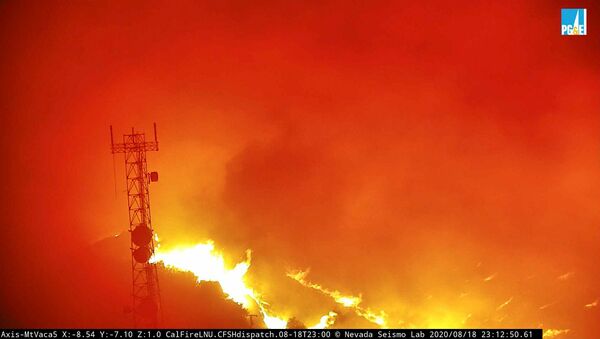A study published Thursday by research organization BloombergNEF has determined that while the COVID-19 pandemic was forecast to drop US greenhouse gases by 9.2% in 2020, those predictions may not come to fruition due to dry season forest fires along the US West Coast.
Taking into account air pollution driven by the deadly fires, officials indicated that net emissions are instead expected to slide 6.4% when compared against greenhouse gas figures from 2019.
“[The increase in forest fire emissions] partially offset the drop in emissions from human activity,” the report states, noting that the fires unleashed some 184 million tons of carbon dioxide. “The fires in the US in 2020 are part of a global trend, since 2019, of forest fires occurring more frequently in temperate regions.”
The 2020 wildfire season saw enormous blazes across California, Oregon and Washington state, as strong winds spread flames and sent wildfire smoke to the nation's East Coast. At the time, the US National Weather Service confirmed that smoke had been pushed across the Mid-Atlantic with the help of a strong jet stream. Smoke from the fires even managed to make it to Europe.
According to the National Interagency Fire Center, an average of 6.9 million acres have been burned every year since 2000; however, in California, over 4.1 million acres were burned during the 2020 season alone. In neighboring Oregon, over 1.2 million acres burned while Washington state saw over 700,000 acres burned.
Despite the wildfires, the report notes that while “a burnt forest will regrow, taking greenhouse gases back out of the atmosphere [...] there is no equivalent pathway for sequestration opened when fossil fuels are extracted and burned.”
Additionally, researchers hailed transportation emissions dropping by 4% and power sector emissions depleting by nearly 3%, stating that the “economic disruption of 2020” put the US back on track to meet the promises of the Paris Climate Agreement, which the Trump administration officially began to withdraw the US from in 2019.
However, the gains aren’t likely to stick around once COVID-19 restrictions are lifted and the economy begins to rebound. The report ultimately warns that changes in emissions “must be year on year” to curb greenhouse gas effects on the climate.



